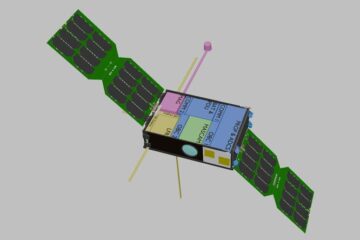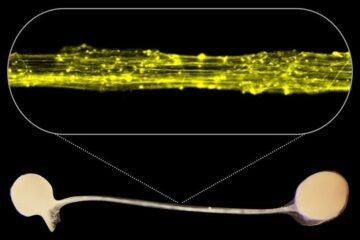Penn Research Answers Long-Standing Question About Swimming in Elastic Liquids

Paulo Arratia, assistant professor of mechanical engineering and applied mechanics, along with student Xiaoning Shen, conducted the experiment. Their findings were published in the journal Physical Review Letters.
Many animals, microorganisms and cells move by undulation, and they often do so through elastic fluids. From worms aerating wet soil to sperm racing toward an egg, swimming dynamics in elastic fluids is relevant to a number of facets of everyday life; however, decades of research in this area have been almost entirely theoretical or done with computer models. Only a few investigations involved live organisms.
“There have been qualitative observations of sperm cells, for example, where you put sperm in water and watch their tails, then put them in an elastic fluid and see how they swim differently,” Arratia said. “But this difference has never been characterized, never put into numbers to quantify exactly how much elasticity affects the way they swim, is it faster or slower and why.”
The main obstacle for quantitatively testing these theories with live organisms is developing an elastic fluid in which they can survive, behave normally and in which they can be effectively observed under a microscope.
Arratia and Shen experimented on the nematode C. elegans, building a swimming course for the millimeter-long worms. The researchers filmed them through a microscope while the creatures swam the course in many different liquids with different elasticity but the same viscosity.
Though the two liquid traits, elasticity and viscosity, sound like they are two sides of the same coin, they are actually independent of each other. Viscosity is a liquid’s resistance to flowing; elasticity describes its tendency to resume its original shape after it has been deformed. All fluids have some level of viscosity, but certain liquids like saliva or mucus, under certain conditions, can act like a rubber band.
Increased viscosity would slow a swimming organism, but how one would fare with increased elasticity was an open question.
“The theorists had a lot of different predictions,” Arratia said. “Some people said elasticity would make things go faster. Others said it would make things go slower. It was all over the map.
“We were the first ones to show that, with this animal, elasticity actually brings the speed and swimming efficiency down.”
The reason the nematodes swam slower has to do with how viscosity and elasticity can influence each other.
“In order to make our fluids elastic, we put polymers in them,” Arratia said. “DNA, for example, is a polymer. What we use is very similar to DNA, in that if you leave it alone it is coiled. But if you apply a force to it, the DNA or our polymer, will start to unravel.
“With each swimming stroke, the nematode stretches the polymer. And every time the polymers are stretched, the viscosity goes up. And as the viscosity goes up, it's more resistance to move through.”
Beyond giving theorists and models a real-world benchmark to work from, Arratia and Shen’s experiment opens the door for more live-organism experiments. There are still many un-answered questions relating to swimming dynamics and elasticity.
“We can increase the elasticity and see if there is a mode in which speed goes up again. Once the fluid is strongly elastic, or closer to a solid, we want to see what happens,” Arratia said. “Is there a point where it switches from swimming to crawling?”
Arratia and Shen’s research was supported by the National Science Foundation.
Media Contact
More Information:
http://www.upenn.eduAll latest news from the category: Physics and Astronomy
This area deals with the fundamental laws and building blocks of nature and how they interact, the properties and the behavior of matter, and research into space and time and their structures.
innovations-report provides in-depth reports and articles on subjects such as astrophysics, laser technologies, nuclear, quantum, particle and solid-state physics, nanotechnologies, planetary research and findings (Mars, Venus) and developments related to the Hubble Telescope.
Newest articles

Caution, hot surface!
An international research team from the University of Jena and the Helmholtz Institute Jena are demystifying the mechanisms by which high-intensity laser pulses produce plasma on the surface of solids….

Exploring the Asteroid Apophis With Small Satellites
In five years’ time, a large asteroid will fly very close to Earth – a unique opportunity to study it. Concepts for a national German small satellite mission are being…

First model of the brain’s information highways developed
Our human brain is not only bigger and contains more neurons than the brains of other species, but it is also connected in a special pattern: Thick bundles of neurons…





















